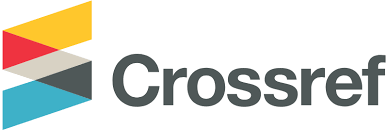Pengenalan Pola Wajah Menggunakan Metode Block-Eigenface pada Raspberry Pi
Abstract
Rapid technological development has created a human face recognition system. The use of this facial recognition system spread to various fields. One of them is the security field that uses this system for authentication which is usually applied to Internet of Things based systems. The Raspberry Pi microprocessor is used as a place to implement a face recognition system to fulfil the IoT requirements. This facial recognition system measures qualitatively the characteristics of the human face, such as the shape of the face, eyes, nose, and mouth. There are many methods for measuring facial characteristics. One of them is the Block-Eigenface method which is a derivative of the Eigenface method. This method is a development method that applies blocking to the original method. Two datasets were used in this study, the first was a dataset from the results of data collection with 100 images of 10 classes (dataset Informatics), and the second dataset was commonly used was the ORL dataset with 400 images of 40 classes. The blocking done has an effect on the accuracy and computational time of the original method. In the Informatics dataset the Eigenface method got 84% ??results with a classification time of 0.003 seconds, the Block-Eigenface method got an accuracy of 98% with a classification time of 0.094 seconds. The ORL dataset provided an average accuracy of 55.42% with an average classification time of 0.014 seconds on the Eigenface method and 82.22% with an average classification time of 0.019 seconds on Block-Eigenface.
Key words: Face Recognition, Raspberry Pi, Eigenface, Block-Eigenface, Internet of Things.
















